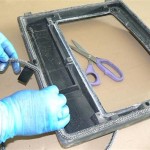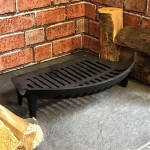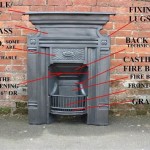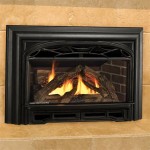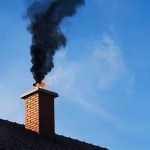How To Build a Wood Burning Fireplace
Constructing a wood-burning fireplace is a significant undertaking that necessitates careful planning, adherence to building codes, and a solid understanding of masonry principles. A properly built fireplace can provide warmth, ambiance, and increase a property's value. However, improper construction presents serious fire hazards and potential structural damage. This article elucidates the key steps involved in building a wood-burning fireplace, emphasizing safety and compliance with local regulations.
The process begins with a thorough assessment of the building site, including evaluation of the existing structure, soil conditions, and proximity to combustible materials. Detailed blueprints or schematics are essential, outlining the dimensions of the fireplace, the chimney's trajectory, and the materials required. Obtaining the necessary building permits is crucial before commencing any construction work.
Planning and Preparation
Before any physical construction begins, a comprehensive plan must be developed and strictly followed. This plan should encompass all aspects of the fireplace's design and construction.
The first step within the planning phase is determining the desired size and style of the fireplace. This will largely depend on the room's dimensions and the overall aesthetic of the home. Consider the firebox size, hearth dimensions, and the overall height of the fireplace structure. These dimensions will directly impact the amount of heat the fireplace will generate and its visual impact on the space.
Next, research and select appropriate building materials. Fire-rated bricks or masonry blocks are essential for the firebox and chimney. These materials are designed to withstand the intense heat generated by a wood fire. Mortar specifically formulated for high-temperature applications is also critical. Ensure these materials meet local building codes and safety standards.
Local building codes and regulations must be thoroughly researched. These codes dictate specific requirements for fireplace construction, including chimney height, clearances from combustible materials, and fire safety features. Engaging with local building inspectors early in the planning process can help avoid costly mistakes and ensure compliance.
Finally, assemble all the necessary tools and equipment. This includes trowels, levels, measuring tapes, masonry saws, mixing tools, safety glasses, gloves, and scaffolding if necessary. Having the right tools on hand will streamline the construction process and improve the quality of the finished product.
Firebox Construction
The firebox is the heart of the fireplace, where the fire burns. Constructing it safely and correctly is paramount to the fireplace's overall function and safety.
The first step in firebox construction is to lay a solid foundation. This foundation should be made of concrete and extend beyond the dimensions of the firebox to provide a stable base. The foundation must be level and capable of supporting the weight of the fireplace structure.
Once the foundation is set, begin laying the firebricks or masonry blocks for the firebox walls. Use a high-temperature mortar to bind the bricks together, ensuring tight joints. Refer to the blueprints for the precise dimensions and angles of the firebox. The inner walls of the firebox must be perfectly smooth to ensure efficient airflow and combustion.
The firebox should be constructed with a slight slope towards the back wall. This slope helps to direct the smoke and gases up the chimney. The back wall should also be angled slightly forward to help reflect heat into the room.
A lintel, typically made of steel or reinforced concrete, is required to support the opening above the firebox. The lintel must be strong enough to bear the weight of the chimney structure above. Ensure the lintel is properly positioned and securely mortared in place.
Chimney Construction
The chimney is responsible for safely venting smoke and combustion gases away from the house. Its construction is critical for preventing carbon monoxide poisoning and chimney fires.
The chimney must extend a minimum of three feet above the highest point of the roof within a ten-foot radius. This ensures proper draft and prevents downdrafts. Local building codes may have more stringent requirements.
The chimney is typically constructed using the same fire-rated bricks or masonry blocks as the firebox. Use high-temperature mortar to create strong, airtight joints. The chimney should be lined with a flue liner made of clay tile, stainless steel, or cast-in-place concrete. The flue liner protects the chimney structure from the corrosive effects of combustion gases and helps to maintain a consistent draft.
A smoke chamber is located above the firebox and below the chimney flue. This chamber helps to collect and funnel smoke into the chimney. The smoke chamber walls should be smooth and angled to promote efficient airflow.
Install a rain cap at the top of the chimney to prevent rain, snow, and debris from entering the chimney. The rain cap should be made of durable, non-corrosive material. Consider installing a spark arrestor to prevent embers from escaping the chimney and potentially igniting nearby vegetation.
Hearth and Surround
The hearth is the non-combustible area in front of the fireplace opening that protects the floor from sparks and embers. The surround is the decorative finish around the fireplace opening.
The hearth must extend a minimum of 16 inches in front of the fireplace opening and 8 inches on either side. It should be made of non-combustible materials such as brick, stone, or tile. The hearth should be level and securely attached to the subfloor.
The surround can be made of a variety of materials, including brick, stone, wood, or tile. The choice of material will depend on the overall aesthetic of the room. Ensure that any combustible materials used for the surround are properly spaced and protected from the heat of the fireplace.
Consider incorporating a mantel above the fireplace opening. The mantel provides a decorative shelf and can also help to deflect heat away from the wall above the fireplace.
Grout and seal all joints and seams in the hearth and surround to prevent water damage and air leaks. A properly sealed hearth and surround will enhance the fireplace's efficiency and longevity.
Safety Considerations
Building a wood-burning fireplace involves inherent risks. Prioritizing safety throughout the construction process can minimize the potential for accidents and ensure a safe operating fireplace.
Always wear appropriate personal protective equipment, including safety glasses, gloves, and a dust mask. Proper footwear is also essential when working with heavy materials and tools.
Use scaffolding or ladders that are in good condition and properly secured. Never overload scaffolding or ladders. Always maintain three points of contact when climbing ladders.
Be mindful of combustible materials and potential ignition sources. Keep a fire extinguisher readily available in case of an accidental fire.
After construction, have the fireplace inspected by a qualified professional before using it for the first time. A professional inspection will ensure that the fireplace is properly installed and safe to operate.
By carefully following these steps and adhering to local building codes, it is possible to construct a safe and functional wood-burning fireplace that will provide years of enjoyment.

How To Build A Fireplace Red Cottage Chronicles

How To Make An Outdoor Wood Burning Stove Fireplace B Vintage Style

How To Build Wood Burning Fireplace Storables

Build Or Remodel Your Own House Fireplace Problems Prefab Parts Inserts

How To Build And Start A Fire In Your Fireplace Full Service Chimney

I Built A Fireplace Easier Than Thought

How To Build A Long Lasting Fire Fiveways Fires Stoves
:max_bytes(150000):strip_icc()/ElectricFireplace-5966fdcdaa1540dd8d9abd8786aaedd3.jpg?strip=all)
How To Build A Fireplace

Diy Installation Of Our Indoor Wood Burning Stove A Ive Household

Wood Burning Fireplace James Campbell Los Angeles Real Estate Agent

